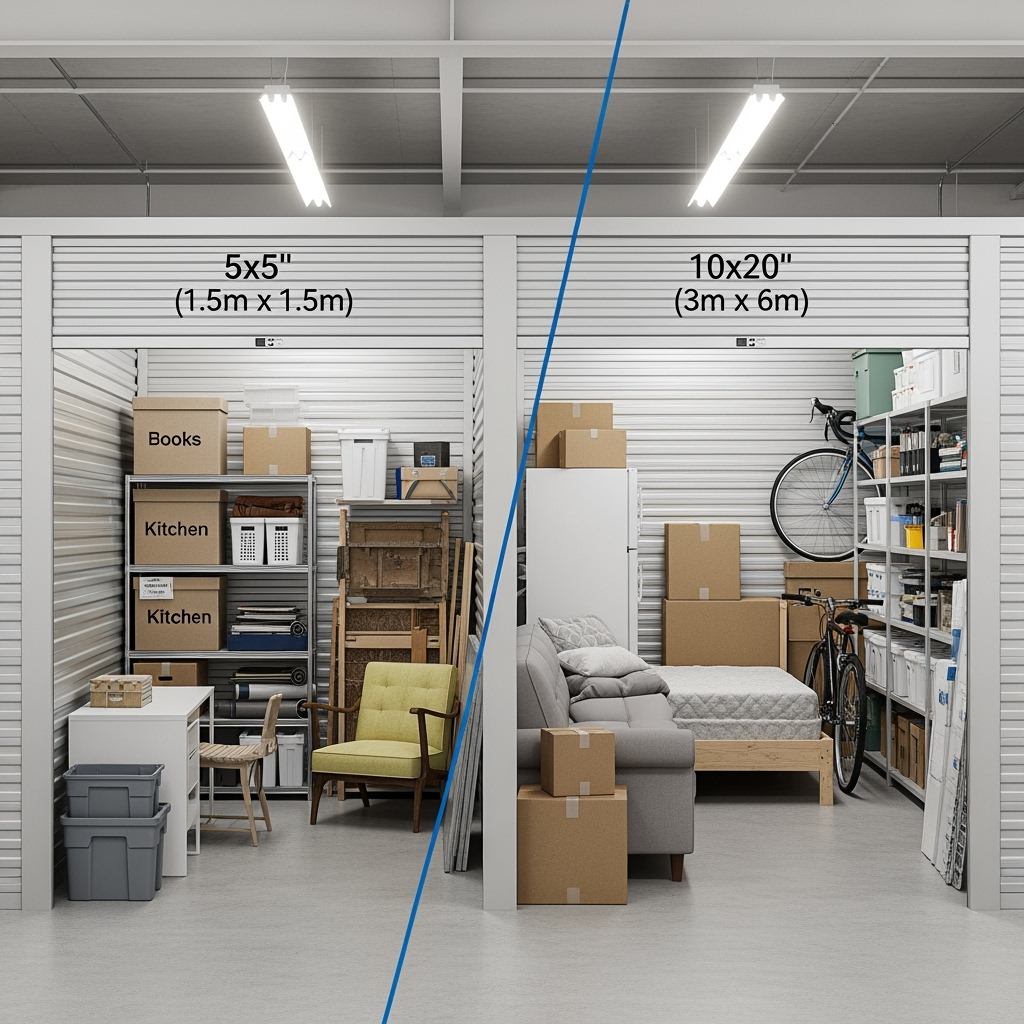Understanding Storage Unit Economics: Size Matters
Choosing the right storage unit size is more than just a matter of convenience—it’s a crucial financial decision that can significantly impact your budget. Whether you’re storing household items, business inventory, or seasonal equipment, getting the size right means avoiding unnecessary costs while ensuring all your belongings are properly protected.

The Cost of Oversizing: Common Pitfalls to Avoid
Many people make the mistake of renting a larger unit than they need, often due to:
- Overestimating the space required for their items
- Not considering vertical storage options
- Failing to properly measure furniture and boxes
- Adding “just in case” space that often goes unused
These miscalculations can lead to paying 20-30% more than necessary for storage space. Let’s explore how to avoid these costly errors.
Step-by-Step Size Calculation Guide

Follow these steps to accurately determine your storage needs:
1. Inventory Assessment
- List all items requiring storage
- Measure large furniture pieces
- Count boxes and containers
- Consider seasonal rotation needs
2. Space Calculation
- Total square footage of furniture footprints
- Add 20% for walkways and access
- Factor in vertical stacking potential
- Consider door clearance needs
Smart Money-Saving Storage Strategies
Implement these techniques to maximize your storage efficiency:
Vertical Optimization
- Use sturdy shelving units
- Stack boxes strategically
- Utilize wall space for hanging items
- Create clear pathways for access
Space-Saving Packing Tips
- Disassemble furniture when possible
- Use vacuum storage bags for soft items
- Fill hollow items with smaller objects
- Standardize box sizes for easier stacking
Common Unit Sizes and Their Best Uses
Here’s a practical guide to standard unit sizes:
- 5×5 (25 sq ft): Small furniture, seasonal items, boxes
- 5×10 (50 sq ft): Studio apartment contents, business inventory
- 10×10 (100 sq ft): Two-bedroom apartment furnishings
- 10×15 (150 sq ft): Three-bedroom house contents
- 10×20 (200 sq ft): Full house furnishings, vehicles
When to Consider Upgrading or Downsizing
Monitor these indicators for potential size adjustments:
- Difficulty accessing items regularly
- Consistent unused space
- Seasonal storage pattern changes
- Business inventory fluctuations
Special Considerations for Climate-Controlled Units
While climate-controlled units typically cost more, they’re essential for:
- Electronics and media equipment
- Wooden furniture
- Important documents
- Artwork and photographs
- Musical instruments
Cost-Saving Tips for Long-Term Storage
Maximize your storage investment with these strategies:
- Regular inventory reviews and reorganization
- Seasonal item rotation
- Shared storage arrangements for occasional access
- Pre-payment discounts when available
Conclusion: Making the Smart Storage Choice
Remember that the perfect storage unit balances space efficiency with accessibility and protection. By carefully calculating your needs and implementing smart organization strategies, you can select a unit size that protects your belongings while protecting your budget. Regular reassessment of your storage needs ensures you’re always getting the best value for your storage dollar.










Leave a Reply